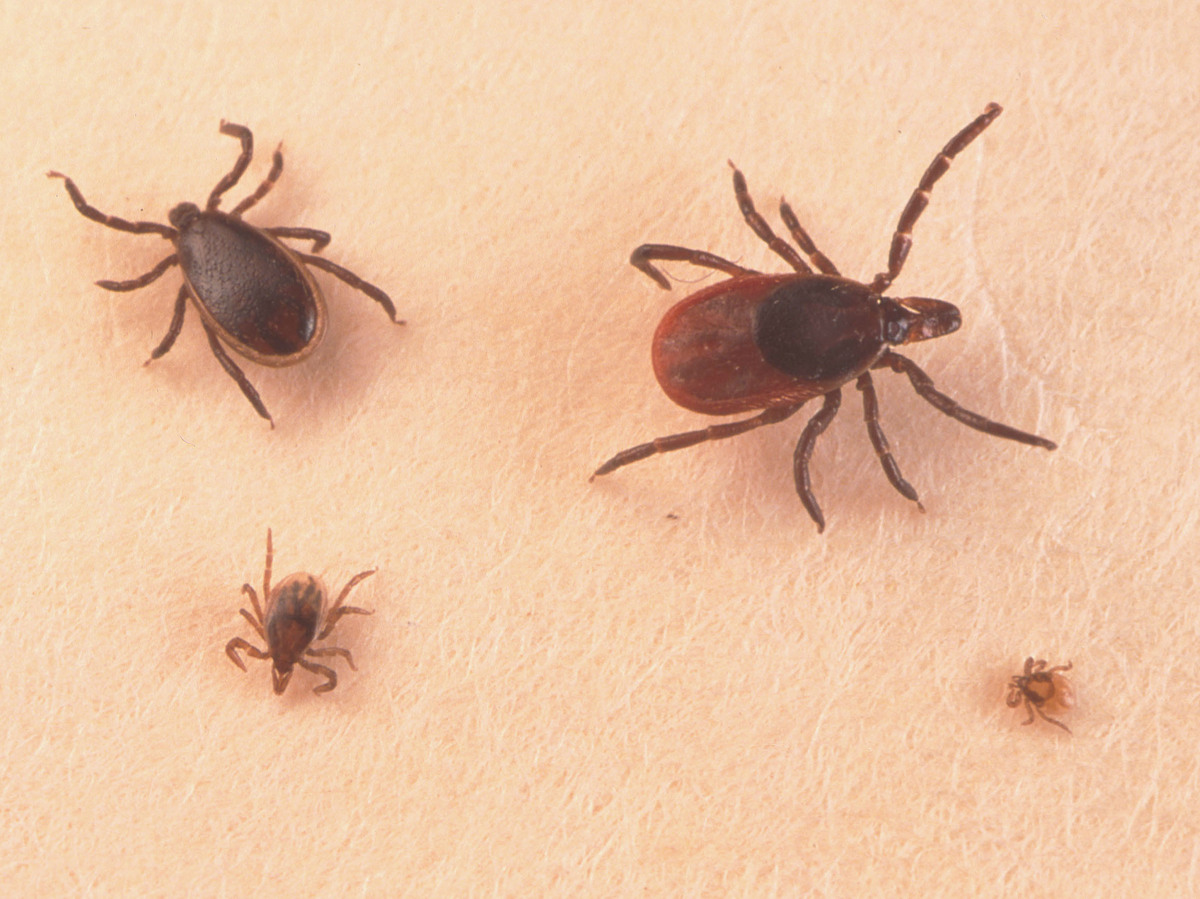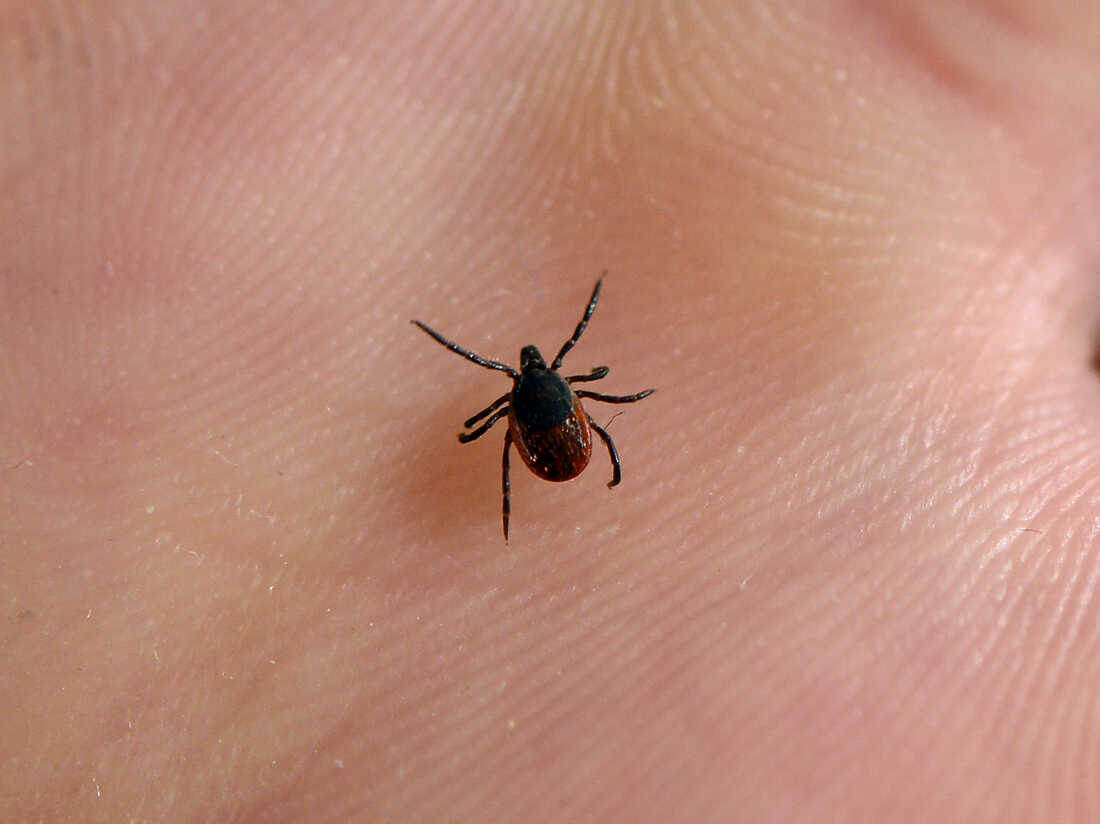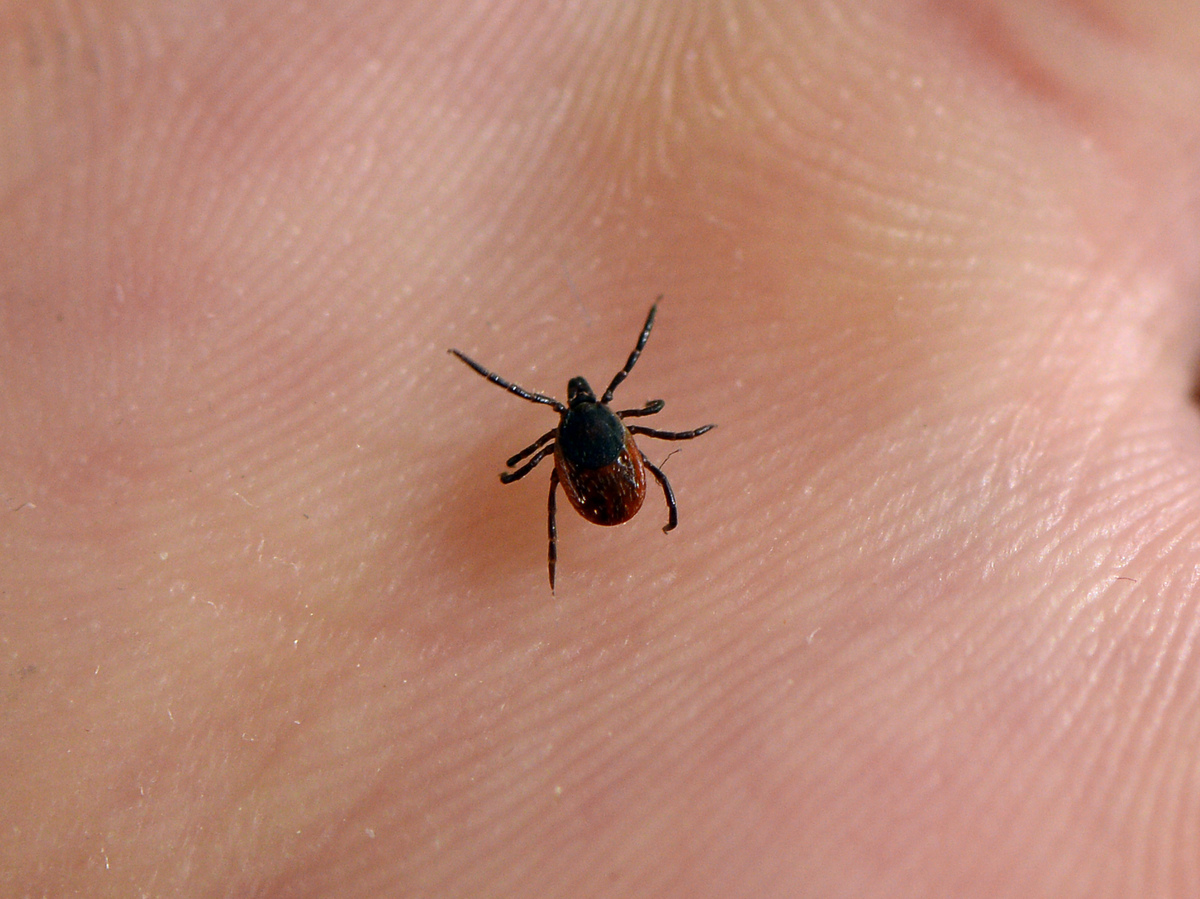
Black-legged ticks, also known as deer ticks, are not insects, but rather arachnids. They can carry more than a dozen rare diseases, including Lyme disease.
Getty Images
Hide description
Change caption
Getty Images

Black-legged ticks, also known as deer ticks, are not insects, but rather arachnids. They can carry more than a dozen rare diseases, including Lyme disease.
Getty Images
Spring is here and the temperatures are warming up. That means tick-borne diseases, especially Lyme disease, are on the rise in the US, and the problem is only getting worse with longer periods of warmer weather across much of the country fueled by climate change.
In the Northeast, upper Midwest, and northern Pacific coast, warmer temperatures allow ticks to become active in early spring and then remain active into fall or winter, increasing the risk of tick-borne disease each year.
With that in mind, NPR is here to help you avoid the black-legged ticks that cause Lyme disease and what to do if you’re bitten.

What is Lyme disease and how is it transmitted?
Black-legged ticks, also known as deer ticks, are not insects, but rather arachnids, and can carry more than a dozen rare diseases, including anaplasmosis, a bacterial infection that causes severe respiratory problems, organ failure, hemorrhaging and even death. Also, serious ticks can transmit relapsing fever, Powassan, and Heartland viruses.
But the most common is Lyme disease. Typical symptoms of the disease include fever, chills, headache, fatigue, muscle and joint pain, swollen lymph nodes, and a skin rash that often looks like a bull’s eye or a hard red oval rash.
About 476,000 people in the US are diagnosed and treated for Lyme disease each year, according to estimates from the Centers for Disease Control and Prevention.
It is increasing in places where it was once rare. In the year In 2018, Quest Diagnostics reported that cases in California increased by 195% from 2015 to 2017, and the cause of the disease was found in all 50 states and Washington, DC.

Ticks do not carry the bacteria that causes it on their heads either. For that to happen, they need to take blood from a portable mammal B. burgdorferi. On the East Coast, that’s typically deer and white-footed mice. In California this includes deer, as well as western gray squirrels, voles, and mice.
An infected tick, as a young or adult female, attaches itself to humans by burrowing its mouth into the flesh where it can feed for three to 10 days. It takes at least 24 hours before the Lyme bacteria start swimming in the saliva, causing symptoms to drip into the host.
Melissa Prusinski, a research scientist and laboratory supervisor at the New York State Department of Health, cautioned that it can be difficult to tell if someone is showing symptoms of Lyme disease. People often mistake it for the flu or Covid-19, she told NPR.
If symptoms begin to appear, Prusinski cautions not to wait for symptoms or a rash to appear before contacting a doctor.
For one, ticks, especially if they are in the nymph stage, can be very difficult to see. They can be the size of a poppy seed or as small as a moment on a computer screen.
Second, “not everyone gets the rash,” she explained, adding, “Sometimes the rash is in an inconspicuous area, like the scalp.”
“It’s better to be safe than sorry, especially if you spend time outdoors and know there’s a potential for you to be bitten by a tick,” she advises. In such cases, see a doctor as soon as possible and mention that you may have a tick-borne disease.
How to remove the mark

In the year In 2016, a sign was seen at the French National Institute of Agricultural Research. Climate change is extending the tick season.
Bertrand Guy/AFP via Getty Images
Hide description
Change caption
Bertrand Guy/AFP via Getty Images

In the year In 2016, a sign was seen at the French National Institute of Agricultural Research. Climate change is extending the tick season.
Bertrand Guy/AFP via Getty Images
The best way to determine if one of these tiny critters has entered your body is to examine the entire body, preferably bare.
“One of those things [researchers] Washing or showering as soon as possible after coming home can reduce the risk of contracting a tick-borne disease,” Prusinski said.
“This can help wash off ticks that aren’t attached, or you can do a full body tick check so you’re more comfortable finding ticks that might be on you.”
And don’t forget about your clothes. Experts say 15 minutes in a dryer on high heat is enough to kill tourist ticks.
If you find a tick on your body, don’t panic.
Just because he may have been bitten, does not mean he has Lyme disease. The New York State Department of Health says that in most cases, a tick must be attached for 36 hours or more before the bacteria can be transmitted.
The safest way to remove one Your body is a nice pair of tight tights.

“Hold the needle as close to the skin as possible, where it enters the skin from the head or mouth, and then pull gently and slowly,” Prusinski says.
Once removed, wash the bite with antibacterial soap or rubbing alcohol. Then note the date of the bite and monitor the bite site for a rash or other symptoms.
What you don’t want to do is grab the tick with your bare hands and squeeze it. And definitely don’t try to get rid of ticks by applying home remedies, applying petroleum jelly, fire, or rubbing alcohol. Even if those ticks are removed from the skin, they increase the risk of contracting a tick-borne disease.
Most of the bacteria and other pathogens that cause deadly disease live in the tick’s gut, and when it becomes irritated, it can inject its contents into the skin, Prusinski said.
And after it’s removed, don’t throw it away!
Leah Gertner, director of education and outreach for the Bay Area Lyme Foundation, recommends wrapping it in a damp paper towel and placing it in a plastic sandwich bag and mailing it to a tick testing lab. Within three days, she said, you can tell what kind of tick it was, how long it fed and what disease it carried. “It’s really important information for people to share with their doctors,” Gaertner said.
Other steps to follow to get rid of ticks completely
Hikers and outdoor enthusiasts should swap dark pants or leggings for light-colored clothing to make it easier to spot even the tiniest creatures. People who go outdoors can use permethrin tick spray on bags, shoes, and socks, which should always be pulled up by trouser cuffs to prevent direct contact with the feet.
Keeping the yard clean can also help reduce the number of ticks in your yard.
Ticks live in wooded areas at ground level and in low vegetation. In general, they move around the landscape by riding on the animals they feed on, such as mice, chipmunks, birds, and white-tailed deer.
Prusinski suggests raking and removing fallen leaves, mowing the lawn and often clearing tall grass and brush from your home. If you have bird feeders, moving them to the edge of the yard is safest, she said.
“This will keep rodents and other animals that are attracted to birdseed off the edge instead of in the middle of your lawn,” she said.
[ad_2]

Comments